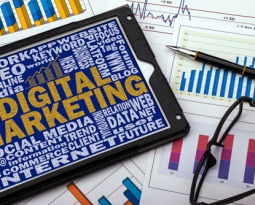We see it in the advertising world all the time: One company starts a campaign, a rival company tries to outdo it, first company counters, and they go back and forth indefinitely. The result? Loads of money down the tube, an unclear result on which one actually came out the victor and the belief that the companies cared more about their ads than their actual product or service. You don't want to get stuck in an ad war, especially with a business that might have more to spend than you.
But what if you can change the rules of the game - not just build a better ad message, but do so in fresh medium? In that case, any company that tries to outdo will ultimately have to copy you first. If that happens, you've already won. That's what digital signage has the power to do: Give you a greater freedom of expression, change the way you interact with your customers, flummox your opponents' attempts to outdo your advertisement and position you as a creative visionary.
Think that sounds like something you're interested in? We thought so. Check out a few ways digital signage can shake up your ad game:
"You can go miles further with a digital ad than with a print ad."
1. More message in the same space
You've got to hand it to ad experts - it's no easy task to send a compelling message when there are only a few square feet to work with. The words have to be legible, the images have to be clear and eye-catching, the connection to the company has to be understandable. In digital signage, that goal is far less burdensome because the medium allows for video, sound, multiple slides, even collaboration with other digital displays. That's not to say just anybody can craft a strong digital message - but it does mean that those with the vision to create a strong print ad should be able to go miles further with a digital one.
2. Align your advertisements
What's better than one ad? Multiple ads! But with digital signage, you can do better than creating a bunch of disparate images, or copying the same one and tweaking it slightly. With moving, interactive messaging, you can create an entire story through advertisement - by aligning each of your displays to perform a specific, tailored function based on any number of factors. Maybe you have one display pose a question and another one an answer, or perhaps each one works off the other in some other way. What's more, you can program the ads remotely, setting them to match a specific deal or promotion. Which brings us to our last point…
"Paper ads are just wasteful."
3. Never static, always optimized
Let's face it: Paper ads are just wasteful. Once the promotion is over, or the item has sold out, that's it for that poster board. And what happens if your brilliant new ad doesn't work as planned? What if that promotion is ineffective and you have to change it? We all make mistakes, but when your static ads don't pan out, you lose the money spent on production. That's not the case with digital displays. You keep the screen and just program in new displays - and why stick to just a seasonal change? You might decide certain ads work best at a certain time of day - something restaurants use all the time when they change the menu from lunch to dinner. You can also experiment more easily with digital ads by using two different campaigns, seeing which works best, and then changing the other to match the more effective one.
The options are nearly limitless with digital ads, and they all look a whole lot better than your stale, faded print media. By switching to digital displays, your business will be a trendsetter, collect more attention and gain more customers.









